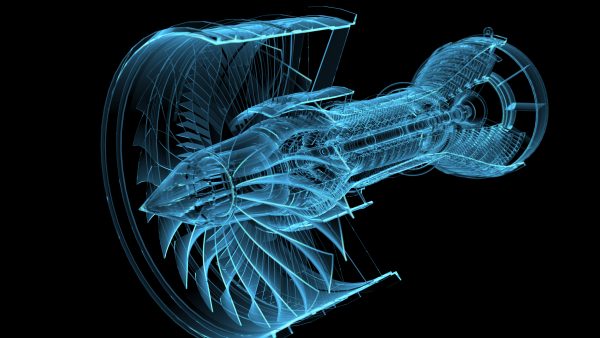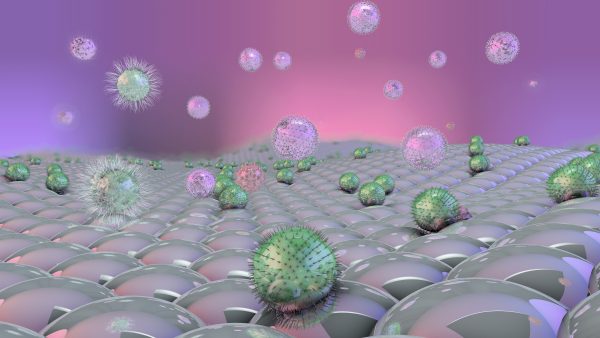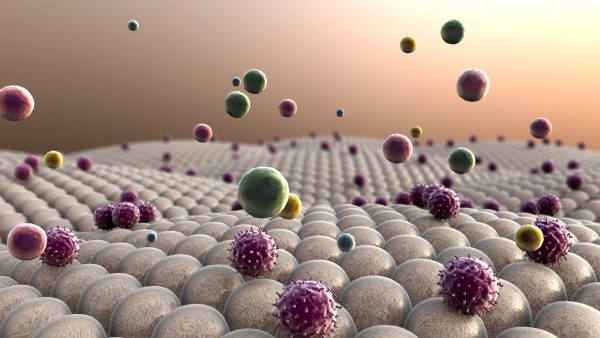Hundreds of examples prove plastics can make our cars lighter, driving more sustainability. Multi-Material Joining can mean thinner composites and more weight savings. Less nuts, bolts, clips and clamps save energy. Non-Destructive Evaluation (NDE) can mean evaluating material performance while saving material production energy.
Anti-odor, anti-microbial fabrics and self-cleaning interiors can mean stretching a product’s useful life. Life Cycle Assessment (LCA) is using science to document each step of a product’s life. Creating, transporting, installing, using, demolishing and recovering are specific phases of LCA. Each phase examines energy use, global warming, acidification, eutrophication, ozone depletion, and smog impacts. Automotive plastics can provide many contributions to sustainability.
Lightweighting
Lightweight materials such as Carbon Fiber Reinforced Plastic (CFRP) composites help reduce vehicles’ impacts on the environment because they offer a high strength to weight ratio. These materials allow innovative, flexible and unique design freedoms and aerodynamic shapes normally difficult to achieve with other materials; plus they are lighter and stronger.
Vehicle lightweighting with plastics can extend driving ranges. CFRPs have the potential to reduce vehicle weight by up to 50% percent while maintaining structural efficiency and enhancing occupant safety.
Aerodynamics, new weight-saving materials and joining techniques such as reversible bonding are helping contribute to sustainability in the automotive industry. For hundreds of specific lightweighting examples see the innovation of these award-winning plastic auto parts.
Vehicle Lightweighting Maintains Safety199 Ways to Lightweight to Save Energy and Emissions How Plastics Helped Reduce Vehicle Weight by Nearly 1,000 Pounds (page 6)Plastics and Sustainability: A Valuation of Environmental Benefits, Costs and Opportunities for Continuous ImprovementMulti-Material Joining
Multi-material joining is a critical enabling manufacturing technology (Oak Ridge National Laboratory) and aids sustainability; here the plastics industry offers new research. A continuous “bead” of adhesive along the entire edge of two connected parts, reduces the concentrated stress forces typically found at bolted, riveted, clipped or clamped locations, making the joint lighter and stronger.
By joining two parts to become one, the new combined shape “shares” stress throughout, allowing each “part” to be additionally “thin-walled” or, lighter still. These weight savings can cascade throughout the vehicle as bonded lighter weight parts replace traditional automotive materials.
Further, the bonding material itself is often lighter in weight than numerous bolts, washers and nut assemblies distributed along a part’s edges. All these weight reduction strategies help increase sustainability by reducing fuel use and increasing range for hybrids and electric propulsion.
This new bonding is reversible, not permanent, a unique new characteristic allowing repair shops to easily disassemble and repair automotive joints. At vehicle end-of-life, reversible bonding can advance sustainability even further by enabling recycling and sorting, since parts can be easily “unglued”.
Plastics and Polymer Composites in Light Vehicles Report Reversible Bonded Joints Using Nano-ferromagnetic ParticlesNon-Destructive Evaluation NDE

For decades the “go to” testing option for manufacturers of auto parts and products was “Make-It-and-Break-It” to measure strength and endurance, however, new testing techniques applicable to plastics materials are changing that. Previously, destroying a part methodically revealed insights into a part’s durability. However, the opposite, non-destructive evaluation (NDE) detects imperfections, cracks and/or flaws without destroying the part. For instance, MRI or X-Ray “non-destructive” evaluation tests a material without disrupting a part’s integrity or causing damage. Because NDE does not permanently destroy or alter the inspected element, it saves money and time, troubleshooting, and research.
NDE involves software that can create models of virtual “part failures” extrapolated from partial experimental “shear” data. Measuring resin concentration, fiber concentration, fiber loading, fiber size and fiber orientation in specific “sheared” plastic auto parts, engineers deduce computer modeling to predict highly accurate multiple-event results without destroying new parts. Conclusions are tested and modeling is continuously refined until production.
In another NDE example, multi-material joining, engineers encapsulate a light-emitting polymer fiber in a joint during assembly. A light signal sent through the finished “join” establishes a joint performance baseline through spectroscopy. When a joint is stressed, pulled, stretched, fatigued, weakened, or damaged, the light signature bouncing through the fiber fluctuates, revealing visually interpretive evidence associated with the joint’s performance, compared to its baseline.
NDE can be helpful predicting maintenance and failure intervals or providing “real-time” joint-performance analysis without destroying or disassembling a part to test it, a plastics innovation predicted to save energy, time, materials and resources.
Anti-Odor, Self-cleaning and Anti-Microbial Materials

In the world of autonomy, multiple unrelated occupants will share automotive interiors daily. Plastics engineers have developed materials with new anti-microbial and self-cleaning hygienic properties. The fabric’s special properties are activated by a passengers’ getting in and out of the vehicle. Because friction is the necessary stimulus, the fabric can provide hygiene and odor-resistance for years.

These fabrics offer durability, tactility and natural appeal in new automotive interior and seating materials. A recent OEM introduced a new line of odor-resistant plastics upholstery fabric.
Liquid milk, coffee, or beverage stains “ball up” and can be soaked off with a tissue without penetrating the weave. Its microbial elements inhibit the growth of most common sources of foul odors, mold, and bacteria. So, even week-old milk, left on this breathable fabric, sealed in a glass bottle has been found to emit no appreciable odor. The fabric also suppresses electric-static charges when getting in and out of the car.
Look for these features in plastic seats, floors, mats, headliner covers, seatbelts, hand rests and other interior surfaces in future autonomous vehicles. Where there is an autonomous ride sharing or mass transit seating, occupants will seek odor-free, hygienic, breathable, unstained, and comfortable fabrics. When a car’s interior components increase its lifespan, the vehicle’s life cycle environmental performance improves.
Life Cycle Assessment
When formally assessing the environmental impacts of automotive products, researchers require a full, rigorous Life Cycle Assessment (LCA) to present a comprehensive environmental evaluation.
Scoring environmental outcomes of a product based solely on “single environmental attributes”: recyclability alone, only manufacturing emissions, bio-based content by itself, embodied energy, decomposition as a single measure, recycled content or nothing else, can confer a misleading, less comprehensive product portrayal. Life Cycle Assessment (LCA) by definition, presents a full-bodied and more conclusive picture of the environmental costs and benefits associated with a product including many measures: raw material production, piece fabrication, item transport distribution, “use phase” energy conservation, postconsumer component disposal, recycling retrieval, reuse or waste-to-energy recovery.
For instance, according to a recent TruCost study, using plastics instead of alternative materials can make vehicles lighter so they require less fuel. This savings amounts to 89 million US gallons of gasoline and diesel over the lifetime of vehicles in North America produced in one year (assuming the 13-year operating life and the 13.8 million vehicles sold in North America in 2015, and the concomitant savings of avoided life cycle water consumption, greenhouse gas and, air, land and water pollution with fuel production, distribution and combustion).
Two recent studies demonstrate the power and importance of Life Cycle Assessment in examining real-world environmental impacts from replacing traditional materials with lightweighted plastic automotive parts.
Researchers assumed a total service life of 150,000 miles traveled, for both examples. A front-end support bolster Life Cycle Assessment exhibited a 46 percent lighter plastic bolster on the Ford Taurus. An assist-step running board Life Cycle Assessment described a 51 percent lighter plastic running board for the Chevrolet Trailblazer. Both replaced previous similar model components. The key conclusions of both studies are: the LCA savings of fuel, emissions and other environmental impacts during the “product use” phase of a vehicle’s life, far outweighed the combined environmental impacts during manufacturing or end-of-life. In fact, it’s estimated that the lightweight running board on all 148,658 GMC Trailblazers that year reduced the use of energy by an amount equivalent to saving 2.7 million gallons of gasoline over the life of those vehicles. The lightweight bolster on the 70,666 Ford Taurus models produced that year reduced the use of energy by an amount equivalent to saving 770,000 gallons of gasoline over the life of those vehicles.
CAFE Standards White Paper Builds SustainabilityCAFE Standards White Paper SummarySee Nearly 60 Examples of Recycled Plastics in Automotive Parts TodayStay Up to Date
Sign up to receive our newsletter and get the latest delivered to your inbox.
The Future Starts Here
The Automotive Plastics and Polymer Composites Roadmap for Future Mobility is charting the path forward in autonomy, connectivity, circularity, electrification, shared mobility, and sustainability.
Access the Roadmap
